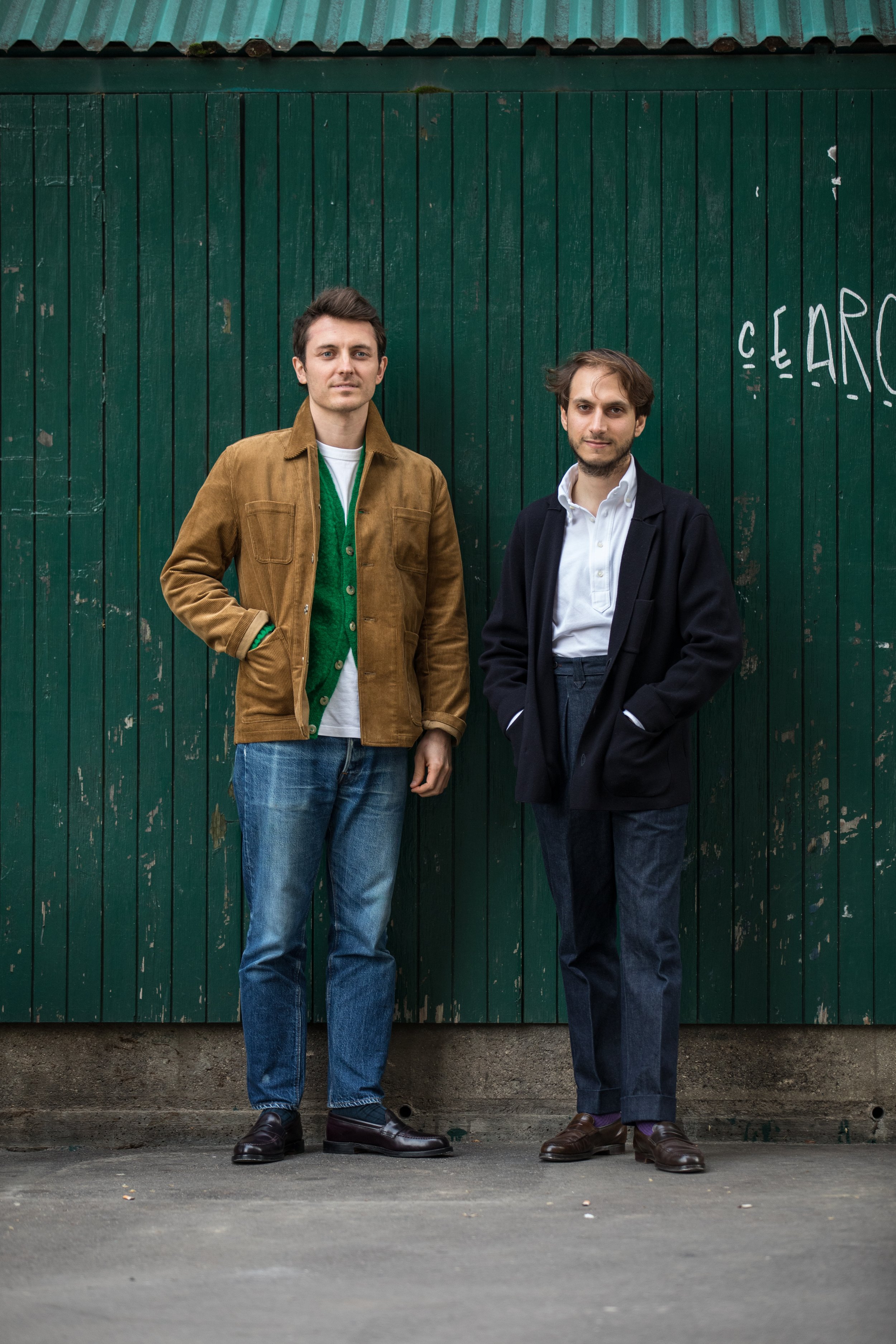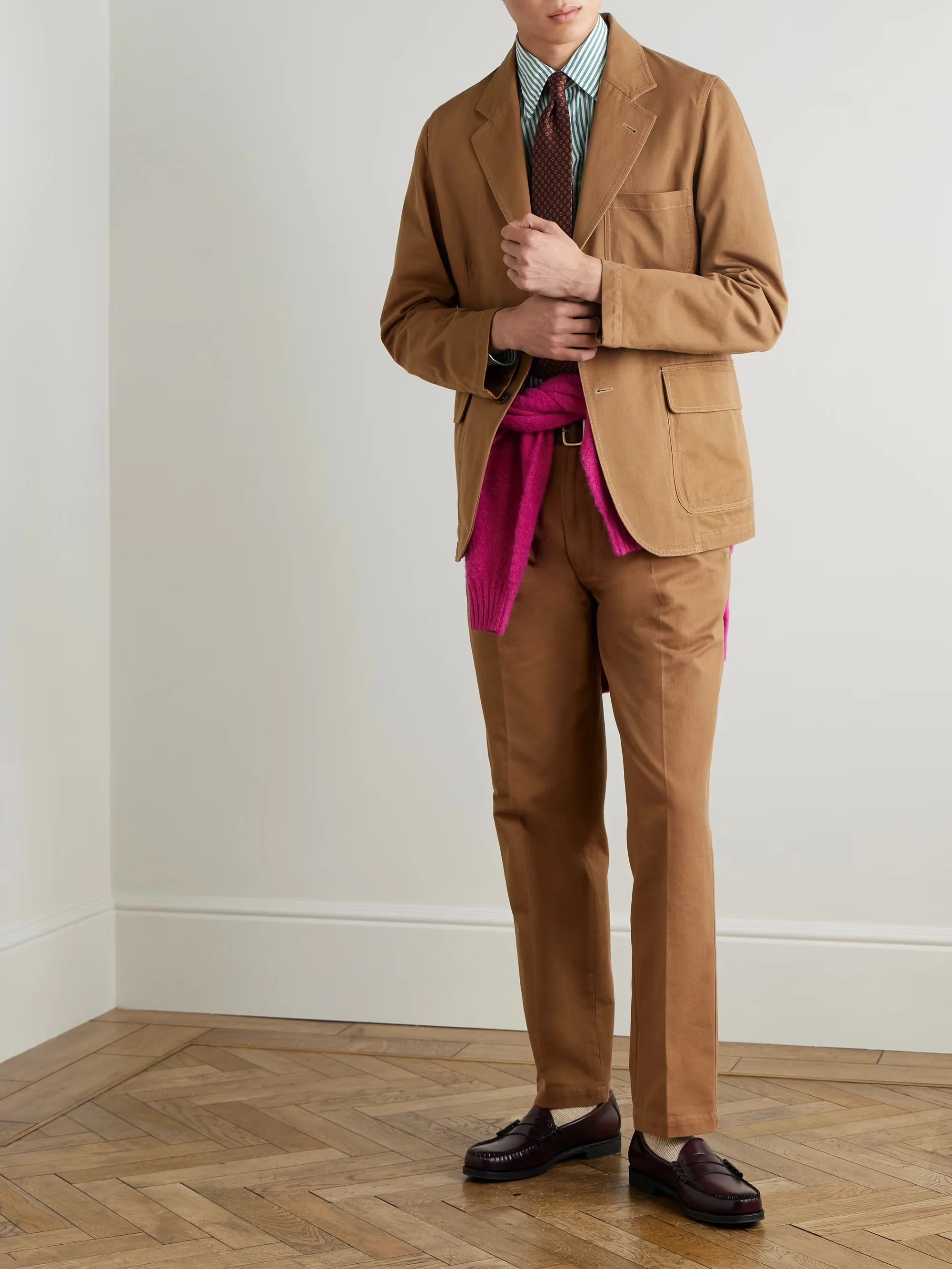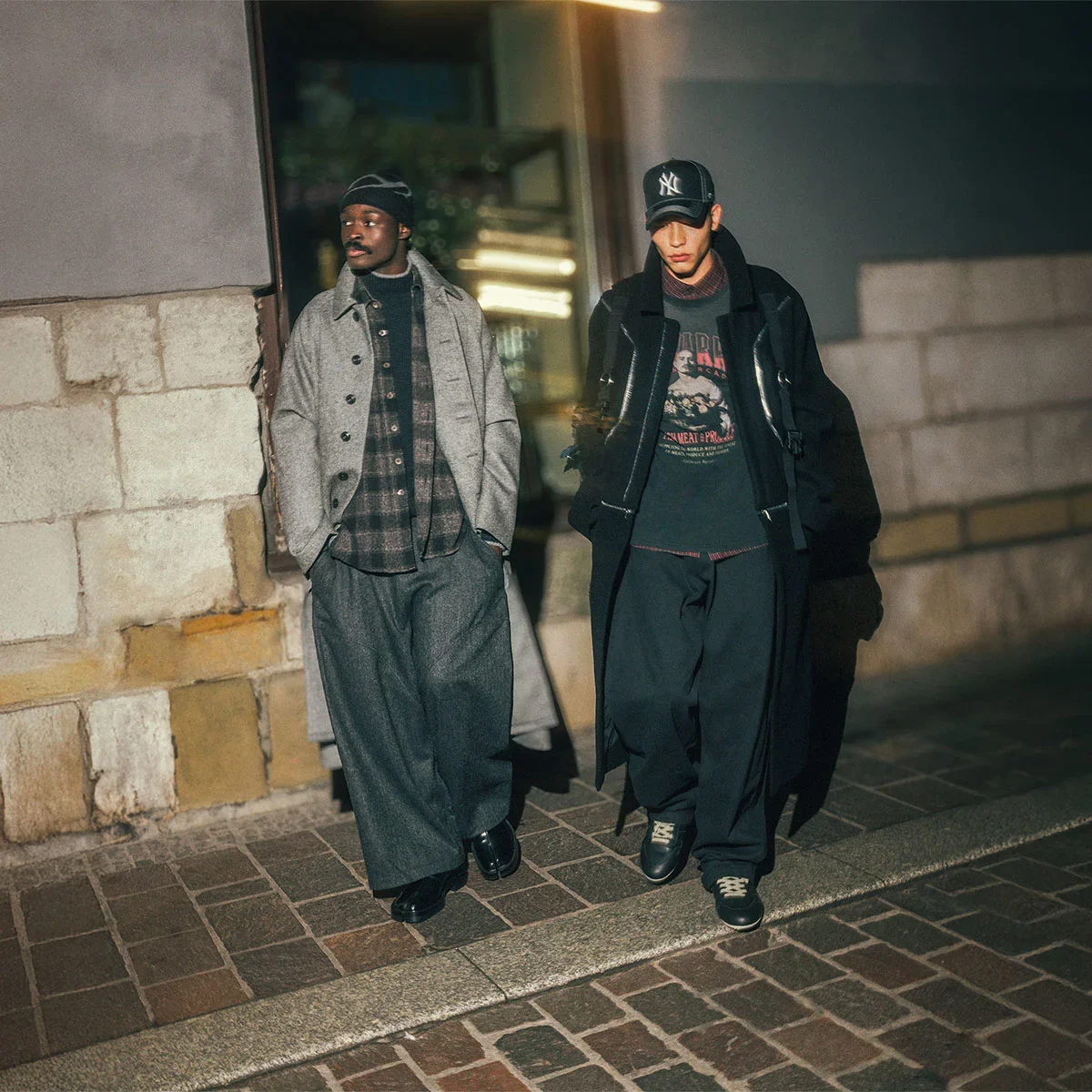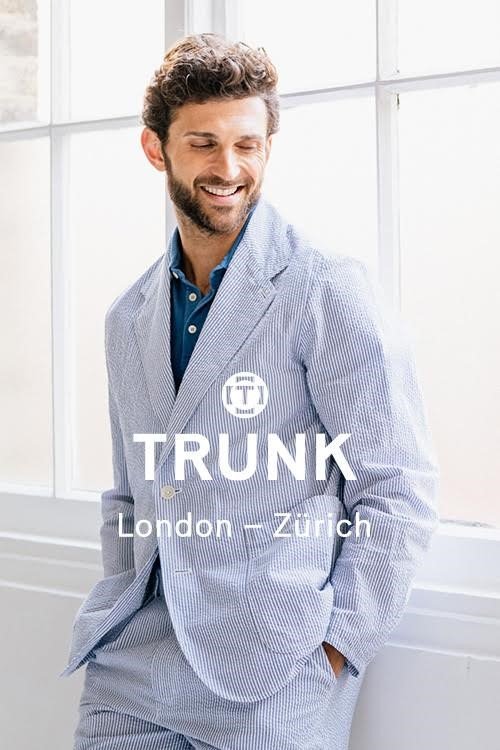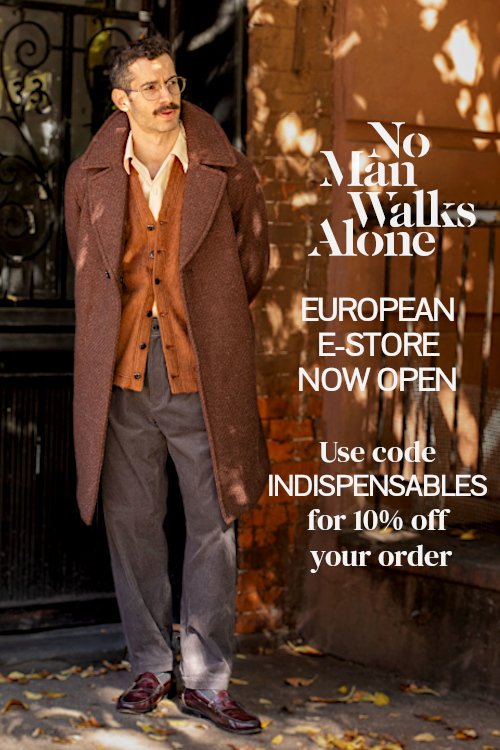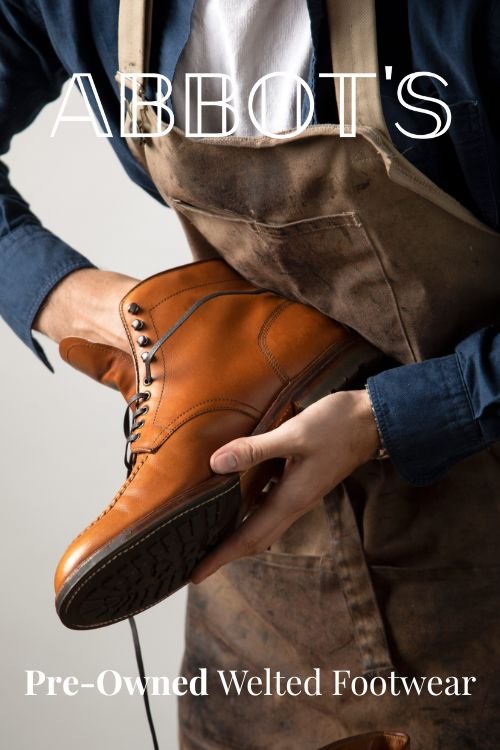Trunk – The brand of the independent menswear store Trunk Clothiers
/Trunk⎜A collection of enduring wardrobe staples
This is the story of a love at first sight as there are few. My sensitivity for art and beauty has something to do with it. I discovered Trunk Clothiers 5 years ago, following an Instagram post by Jamie Ferguson alias @jkf_man. The art direction with a distinctive British flair immediately appealed to me, how did the models on the website manage to wear such colorful clothes with such panache? The combination of warm colors in the proposed outfits drew me in. The eshop, echoing two physical stores - one in London and one in Zurich - is full of established brands such as Alden, Barbour, Begg x Co, Valstar but also lesser known brands like Salvatore Piccolo, Fedeli or Finamore. It's simple, in this pantheon of brands, the shop’s own was missing. Thus was born the brand Trunk Clothiers. In this series, we're going to showcase three key pieces from the brand's new Fall/Winter 2022 collection.
Here is the part one.
Let’s have a closer look.
TRUNK - a birth in the middle of the #menswear movement
The Trunk store was founded in 2010 by Mats Klingberg, its goal is to offer a selection of Japanese, American and European brands. Thus, Trunk is for instance one of the few retailers of Alden shoes - which we are particularly fond of for their comfort and style. Indeed, if you are as well looking for Alden shoe trees - difficult to find in France - you are now served. Trunk Clothiers has added its own name to this list of prestigious brands, taking inspiration from the greatest to create their own image.
2010 marks a turning point in the world of men's fashion in that stylistic barriers have finally falling. It is the explosion of sartorial art and colors. Italy and its age-old tailoring art appears as a figurehead. The suit is now within the reach of all, no longer reserved to an elite. From that moment on, the male audience had expanded considerably and it became easier to find information on the make of garments through forums and websites. Men were looking for quality clothing.
Trunk was able to crystallize this moment to open its shop at the best time, a temple in which the modern man could draw his inspiration and shape himself directly.
It is also in this sense that Trunk Clothiers marked its time. In addition to the cutting-edge selection, the London store very quickly knew how to offer a modern and contemporary image by teaming up with the best menswear photographers of its time. A real novelty, because at the time only brands created cutting-edge content.
The brand's website has also a journal in which you can browse through the most beautiful lookbooks on the planet. If the eshop proposes mostly clothes – it’s key point - it also offers a lifestyle selection where Japanese incense Shoyeido Nijo or Caran d'Arche ballpoint pens are offered. Trunk not only offers a complete wardrobe but also a guaranteed sensorial experience.
Trunk is definitely one of our favorite stores in London. A reference. Do you think you have made the rounds of men's clothing? Have you lost the excitement of discovering beautiful clothes? Go ahead, we are sure that you will come back as enthuasiastic as us every time we had the chance of going there.
The Italian merino wool blazer, a TRUNK essential
The brand itself has grown considerably in recent years and offers essentials but also pieces that are not easily found elsewhere. This is the case with this Italian merino wool blazer in "Milano stitch". A very strong stitch that has a very pleasant touch, does not wrinkle and no pilling for this blazer either! This fabric is quite heavy and wraps the wearer comfortably.
I had never worn this type of knit-blazer. The advantage is that it is a perfect alternative to its counterpart the cardigan, less dressy and more casual. For this reason, I decided to pair this merino blazer into a hybrid outfit of high-waisted trousers with a long sleeve polo. If the blazer has a generous fit on me - here an M - it would have been wiser to opt for an S so that the “blazer-fit effect” would have been respected.
Nevertheless, wearing a knit blazer is not easy, not because it is difficult to combine, simply because we are not used to it. The Italians have been doing it for ages, the British are doing it, why not the French? I am convinced that this piece has a place in a men's wardrobe.
All in all, the Trunk merino blazer is a great piece to spend the Winter in, a perfect piece to layer up or down. An essential.
The Aldford jacket in Corduroy
Part two of the series. A piece from the Trunk collection drew my attention for several weeks, the Aldford jacket in Corduroy.
Why? Probably because for some time now I have been seeing on the Internet several outfits in Corduroy (especially on English websites). And I must admit that when they look stylish, I am immediately captivated. Forget those dusty corduroy trousers your grandpa wears. The Trunk jacket is based on the classic 4-pocket jacket.
Personally, I find it more elegant than an ordinary work jacket with only one chest pocket. It’s made of 100% Cotton with horn buttons. That tan color is simply a beauty, I typically like wearing this kind of color.
Even if at first glance, it does not seem obvious to associate this piece with other garments featuring bright colors, I find that with the kelly green cardigan from Howlin’, a pair of raw jeans and a pair of Alden 986 in cordovan color 8 is definitely a home-run. I've also worn it in a dressier way with a pair of gray flannel trousers, a black leather pair of shoes and a white OCBD shirt and it works either way.
This jacket is a true hybrid piece, easy to pair in an outfit. The con I might have is the fact the jacket tends to mark the fabric (naturally of course) after several wears. In particular in the arm fold. But this does not bother me at all because I believe that clothes are made to be worn and live with its wearer, some call this « patina ».
Above all, this jacket will accompany me for a good part of the season, and with the mild
temperatures of the moment, I wear it as often as possible.

